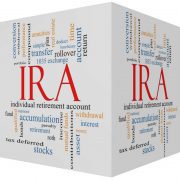Fundamental Facts about the Self-Directed IRA
You may be considering a Self-Directed IRA for your retirement portfolio. But do you have a solid grasp over what this means? If not, we will take the time here to explore some of the most fundamental facts about the Self-Directed IRA—what it is, how it’s used, and what it might accomplish in your portfolio.
By the way, if you want to learn more, you can always read along with our Fundamental Facts about Self-Directed IRAs page right here at American IRA.
Fundamental Fact #1: What is a Self-Directed IRA?
A Self-Directed IRA is not a different type of IRA. It is what happens when you choose to run your IRA according to your own choices. A Self-Directed IRA allows you to hold non-traditional retirement assets like real estate, farms/ranches, businesses like LLCs, precious metals, private notes, and a variety of other assets allowable by the IRS. In fact, the range of potential investments in a Self-Directed IRA is so diverse that the IRS tends to limit retirement accounts by what they cannot hold, such as collectibles in the form of art and wine.
Fundamental Fact #2: How Self-Directed IRAs Work
Let us look at some of the key foundations for how a Self-Directed IRA works:
- Penalties for early withdrawals. This is the case for any retirement account. The goal of retirement accounts, after all, is to encourage investors to put aside more money for retirement. If a Self-Directed IRA did not include a 10% excise tax on amounts withdrawn prior to age 59 ½, then it would hardly be a retirement account at all.
- Hardship conditions for early distribution in the case of certain emergencies, such as the death or total disability of the taxpayer or paying for medical bills.
- Required minimum distributions, also known as RMDs, require investors to start taking money out of the account after a certain point. There is one exception: Roth IRAs, because they use after-tax money to fund the account, do not have RMDs, as the taxes on this money has already been paid via income tax. For that reason, investors sometimes flock to Roth IRAs if they want more money to grow during retirement age.
Fundamental Fact #3: The Benefits of Self-Directed IRAs
Why invest in a Self-Directed IRA, beyond the fact that these accounts make it possible to have tax protections, such as tax deductibility for contributions to a Traditional IRA?
There are a number of wealth protection benefits in addition to tax deferral. For example, money within a Roth IRA will grow tax-free. That means that investments can continue to earn money every year and the investor does not have to pay taxes on this money.
However, it is also important to note that investors should avoid prohibited transactions if they want to continue to exercise these tax benefits. Prohibited transactions include transacting within a Self-Directed IRA in a way that benefits someone you know personally. For example, renting a piece of real estate property within an IRA to a family member would mean that you would receive personal benefit from the property. This goes against the purpose of the retirement account, which is to maintain investments separate from one’s personal holdings and is prohibited by the IRS.
Want to know more about Self-Directed IRAs? There is plenty to learn, including the different account types available to investors. We at American IRA feature all sorts of information to learn about Self-Directed IRAs and how they work.
Interested in learning more about Self-Directed IRAs? Contact American IRA, LLC at 866-7500-IRA (472) for a free consultation. Download our free guides or visit us online at www.AmericanIRA.com.









